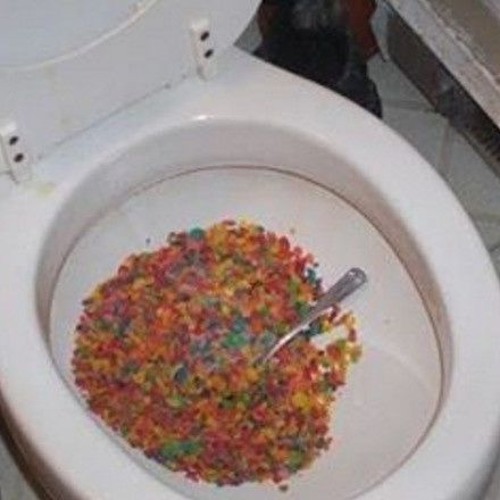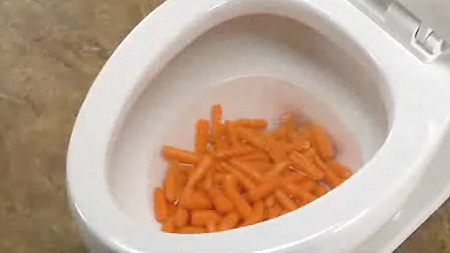They are making a few good annotation relating to Think Twice Before Flushing Food Down Your Toilet as a whole in this article down the page.

Introduction
Lots of people are frequently faced with the predicament of what to do with food waste, particularly when it involves leftovers or scraps. One common concern that arises is whether it's alright to purge food down the commode. In this post, we'll look into the reasons individuals could consider flushing food, the repercussions of doing so, and different approaches for appropriate disposal.
Reasons why people could think about flushing food
Lack of understanding
Some individuals may not be aware of the possible damage brought on by flushing food down the bathroom. They may incorrectly believe that it's a harmless technique.
Ease
Flushing food down the commode might seem like a fast and very easy service to throwing away unwanted scraps, specifically when there's no close-by garbage can offered.
Laziness
In some cases, people may just pick to flush food out of large negligence, without taking into consideration the consequences of their actions.
Effects of flushing food down the toilet
Ecological impact
Food waste that ends up in waterways can add to contamination and injury water environments. In addition, the water used to flush food can stress water sources.
Plumbing issues
Flushing food can bring about clogged up pipes and drains pipes, triggering expensive pipes fixings and inconveniences.
Sorts of food that need to not be purged
Coarse foods
Foods with fibrous structures such as celery or corn husks can obtain tangled in pipes and cause obstructions.
Starchy foods
Starchy foods like pasta and rice can soak up water and swell, leading to blockages in pipes.
Oils and fats
Greasy foods like bacon or food preparation oils should never ever be purged down the commode as they can solidify and trigger clogs.
Appropriate disposal methods for food waste
Utilizing a garbage disposal
For homes furnished with garbage disposals, food scraps can be ground up and purged with the plumbing system. However, not all foods are suitable for disposal in this way.
Recycling
Particular food product packaging products can be reused, reducing waste and reducing environmental impact.
Composting
Composting is an eco-friendly means to take care of food waste. Organic products can be composted and utilized to enrich dirt for gardening.
The relevance of appropriate waste management
Decreasing ecological damage
Proper waste administration practices, such as composting and recycling, help decrease contamination and protect natural resources for future generations.
Shielding plumbing systems
By avoiding the technique of flushing food down the toilet, home owners can stop pricey pipes repair work and preserve the honesty of their plumbing systems.
Conclusion
In conclusion, while it might be appealing to flush food down the toilet for ease, it is necessary to comprehend the prospective effects of this action. By taking on correct waste management practices and taking care of food waste properly, people can add to much healthier pipes systems and a cleaner atmosphere for all.
FLUSH FOOD DOWN THE TOILET?
FLUSHING FOOD CAN CAUSE BLOCKED DRAINS IN YOUR HOME
All of the plumbing fixtures in your home are connected to the same sewer pipe outside of your home. This outdoor sewer pipe is responsible for transporting all the wastewater from your home to the Council sewer mains. Even small pieces of food that go down the kitchen sink can cause problems for your sewer. It should therefore be obvious that flushing larger bits of food, such as meat, risks a clog in either the toilet itself or the sewer pipes. Flushing greasy food is even more problematic because oil coagulates when it cools, coating the interior lining of your pipes.
THE TOILET IS NOT A BIN
Food isn’t the only thing that people shouldn’t be flushing down the toilet. People use the toilet to dispose of all kinds of things such as tampons, makeup wipes, dental floss, kitty litter and even underwear. Water goes to great lengths to educate residents about the high costs and stress placed on wastewater treatment systems simply from people flushing the wrong stuff down the toilet. It costs taxpayers millions of dollars each year, and homeowners thousands in blocked drain repairs.
FLUSHING FOOD IS A WASTE OF WATER
Flushing food is a waste of our most precious resource - water. In June this year Level 1 water restrictions were introduced to protect water supply from drought conditions. Much of New South Wales continues to be affected by prolonged drought with recent figures revealing up to 97 per cent of the state remains in drought. Depending on whether you have a single or dual flush toilet, every single flush uses between five and 11 litres of water. In the current climate this is a huge amount of water to be wasting on flushing food that should be placed in the bin (or better yet, the compost).
https://www.jabplumbingsolutions.com.au/blog/can-you-flush-food-down-the-toilet

I am very serious about Is it safe to flush food (especially rice) down the toilet? and I hope you enjoyed reading the post. Kindly take a moment to promote this article if you liked it. I cherish reading our article about Think Twice Before Flushing Food Down Your Toilet.
Try Here